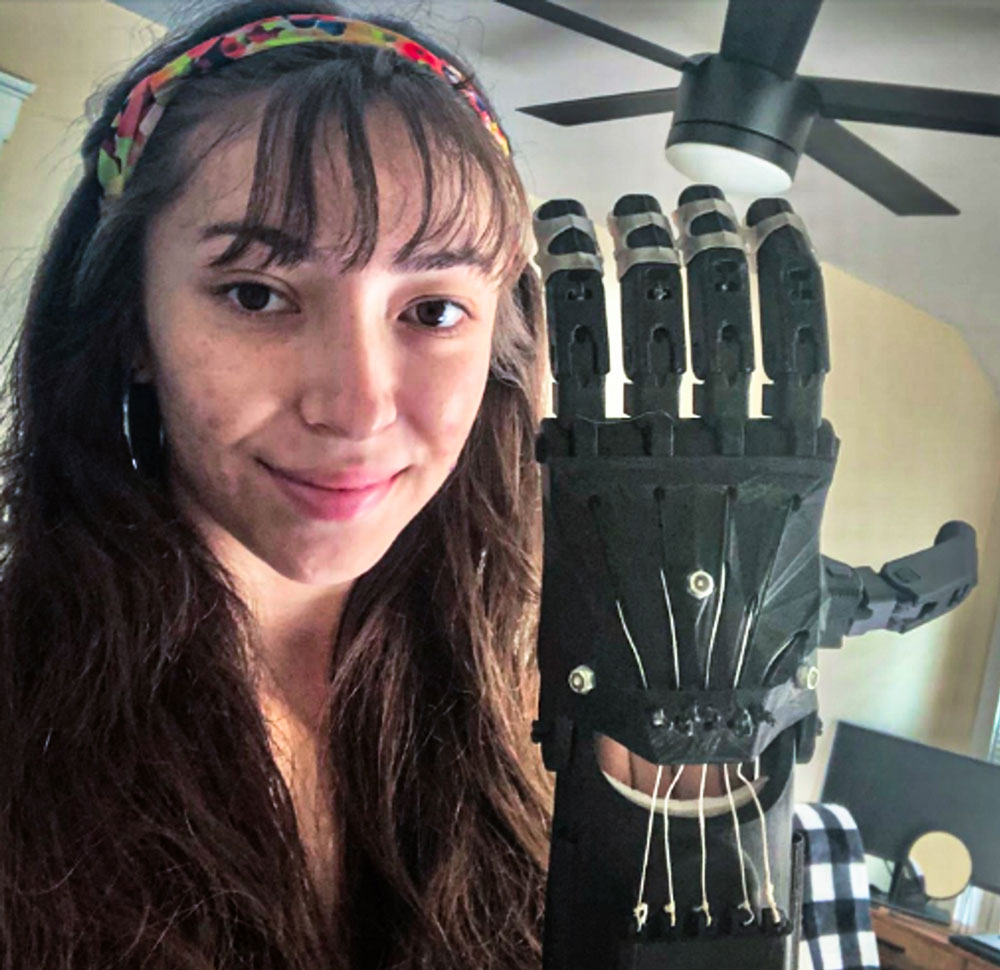
The sixth annual Summer Physics Camp for Young Women, cosponsored by Sandia, Los Alamos National Laboratory and the Hawaii Science and Technology Museum virtually hosted 40 teens from New Mexico and Hawaii this summer.
The camp gave teenage girls in grades eight through 12 the chance to explore careers in science, technology, engineering and math. Sandia student intern Alex Miera, an undergraduate studying electrical and computer engineering at Worcester Polytechnic Institute, led portions of the camp.
Alex led the teens in creating, calibrating and using sensors to control a robotic hand.
Participants joined the camp from throughout New Mexico and represented 31 schools in the state. Five of the students live in Hawaii. The camp brings STEM to a diverse group of underrepresented students; 82% of participants belong to minority groups and about 45% of this year’s participants reported that they qualify for free school lunch.
As a student intern, Alex was able to talk with students about her journey from a kid with an interest in science to a college student working at a national laboratory.
Alex began learning about robotics and electrical and computer engineering early on after her younger brother, who was born with a neurological condition called Chiari Malformation Type 1, prevented him from walking correctly. She wanted to understand the mechanics of how orthotics and prosthetic devices could help her brother and others in need.
After attending countless appointments and shadowing her brother’s orthotist, Alex completed a middle school science project on orthotics and prosthetics. As a result, she built her first prosthetic hand with the assistance of her school’s 3D printing club, and e-NABLE, an online global community of digital humanitarian volunteers using 3D printers to make free and low-cost prosthetic limb devices for children and adults.
Her desire to build prosthetics remained strong through high school and Alex continued to feed her curiosity through job shadowing, researching and attending science and robotics camps.
“Through a local robotics camp hosted by Shelly Gruenig, and her company BeGreaterThanAverage, and the Robotics Vehicle Range out at Sandia and a lot of luck, I was able to get an internship with Advanced Field Ops and Robotics at Sandia National Labs my freshman year of college,” Alex said.
Soon after she joined Sandia, she began working on a project related to exoskeletons. Under the guidance of mechanical engineer Jason Wheeler and the robotics team, the DOE Environmental Management Wearable Robotics Program has grown into a multipartner program.
During her year-round internship, Alex would like to learn how exoskeletons, prosthetics, orthotics, neuroscience, anatomy and physiology relate to electrical and computer engineering.
“Through the physics camp project I supported, robotics camp training, and growing body of knowledge Sandia has provided me, I realized that sensors were that glue,” Alex said. “Our bodies and robots need sensors to respond to their environments.”
After she graduates, Alex wants to follow her dreams of work in rehabilitation, medical monitoring and educating others.
“I would like to pursue graduate school and maybe even a doctorate focused on or around sensors, specifically sensors that will support vital sign monitoring or rehabilitation efforts,” she said. “Later on, I would love to spend part or all of my time teaching. I also want to follow in the footsteps of my parents and Sandia mentors who taught me to persevere, never give up and follow my dreams.”